Disclosure: This article contains affiliate links. We may earn a commission from purchases at no extra cost to you, which helps our travel content.
Standing beneath the undulating stone canopy of Casa Milà as golden autumn light filtered through its organic curves, I felt that familiar flutter of excitement—the same sensation I experienced years later while gazing up at Tokyo's Nakagin Capsule Tower, its modular boxes seemingly suspended in mid-air. These two cities, separated by continents and architectural philosophies, represent opposite ends of the design spectrum yet share a profound commitment to pushing boundaries. Barcelona celebrates Gaudí's nature-inspired modernisme while Tokyo embraces sleek futurism and technological innovation. Having explored both destinations extensively through my work as a travel agent specializing in cultural experiences, I've crafted this architectural lover's guide for couples seeking a sophisticated autumn escape that bridges these two distinctive design worlds. Join me on this two-week journey through these urban landscapes where every building tells a story and every skyline challenges convention.
Barcelona's Organic Masterpieces: The Gaudí Experience
Barcelona in autumn reveals Antoni Gaudí's works in their most flattering light—warm sunshine illuminating the mosaics of Park Güell without summer's harsh glare or crushing crowds. During my third visit to the city last October, I discovered that scheduling early morning visits (particularly to Sagrada Família) provides not just the best lighting for photographs but also moments of relative tranquility to appreciate Gaudí's genius.
The Sagrada Família remains Barcelona's crown jewel, and rightfully so. The autumn light streaming through its stained glass creates an ethereal rainbow effect that simply doesn't translate in photographs. I recommend booking the tower access for panoramic city views and investing in the audio guide for context on the symbolism embedded throughout the structure.
Beyond the iconic basilica, Casa Batlló and Casa Milà offer intimate glimpses into Gaudí's residential vision. Casa Batlló's marine-inspired interiors with their flowing forms feel particularly magical in the softer fall light. For the best experience at these popular sites, I've found the Barcelona skip-the-line pass to be indispensable—it saved my clients over two hours of queuing during peak times.
Don't overlook Gaudí's lesser-known works. Palau Güell in the El Raval neighborhood provides a more intimate experience, while the gates and lamp posts he designed for Plaça Reial offer a quick architectural hit between tapas stops. My personal favorite remains the rooftop of Casa Milà (La Pedrera), where chimney sculptures create an otherworldly landscape that's particularly haunting during their evening light shows.
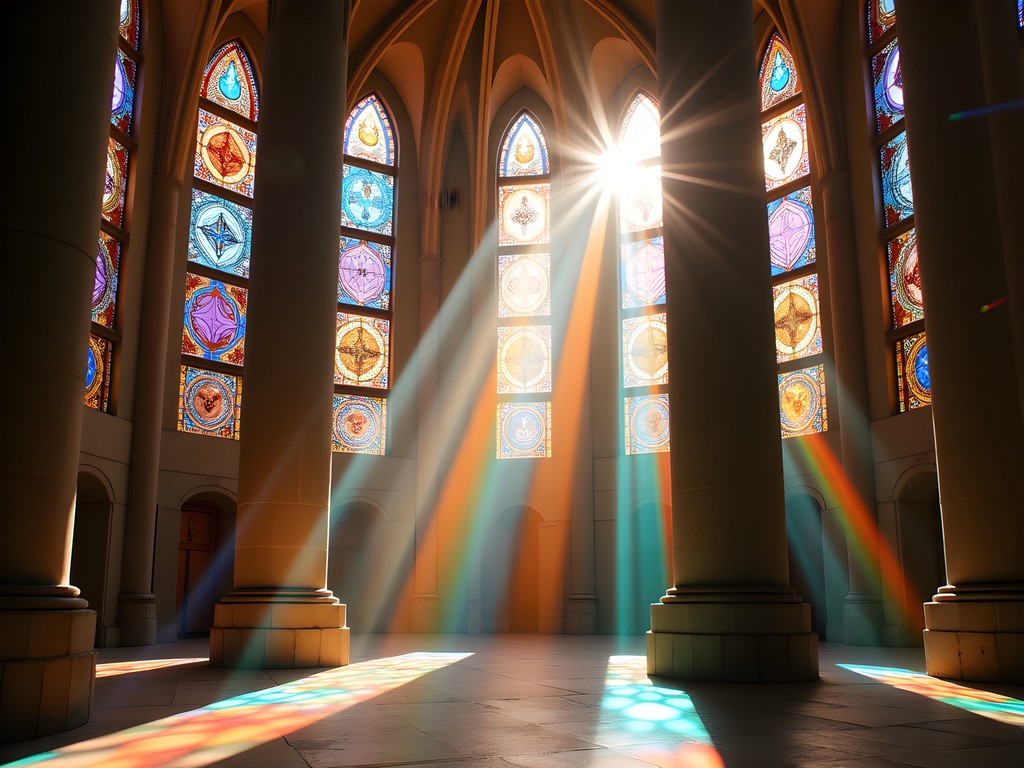
💡 Pro Tips
- Book Sagrada Família tickets at least two weeks in advance for your preferred time slot
- Visit Park Güell either first thing in the morning (8am) or late afternoon for the best lighting and fewer crowds
- Consider the night tour of Casa Batlló for a completely different perspective on Gaudí's work
Tokyo's Futuristic Vision: Where Tradition Meets Innovation
Arriving in Tokyo after Barcelona feels like time-traveling centuries forward. The architectural contrast couldn't be more striking—where Barcelona embraces organic curves and nature-inspired forms, Tokyo presents a vision of geometric precision and technological ambition.
My first recommendation for architectural enthusiasts is the Nakagin Capsule Tower in Ginza (though sadly slated for demolition, parts may still be viewable depending on when you visit). This 1972 metabolist masterpiece by Kisho Kurokawa represents Japanese architectural innovation with its modular living pods—a vision of urban flexibility that was ahead of its time.
The Tokyo International Forum in Marunouchi showcases contemporary Japanese architecture at its finest. Its soaring glass hall with ship-like wooden elements creates a cathedral-like space that's particularly breathtaking in autumn light. I often recommend clients spend time here between shopping excursions in nearby Ginza.
For a contrast between old and new, visit Kengo Kuma's SunnyHills cake shop in Minami-Aoyama, where traditional Japanese wooden joinery techniques create a contemporary latticed exterior. Nearby, Tadao Ando's 21_21 Design Sight in Tokyo Midtown offers another masterclass in minimalist concrete architecture.
When photographing Tokyo's architectural wonders, I've found my wide-angle lens indispensable for capturing the scale of these structures, especially in tight urban spaces. The lens handles Tokyo's dramatic lighting contrasts beautifully, capturing both the gleaming exteriors and the subtle interior details.
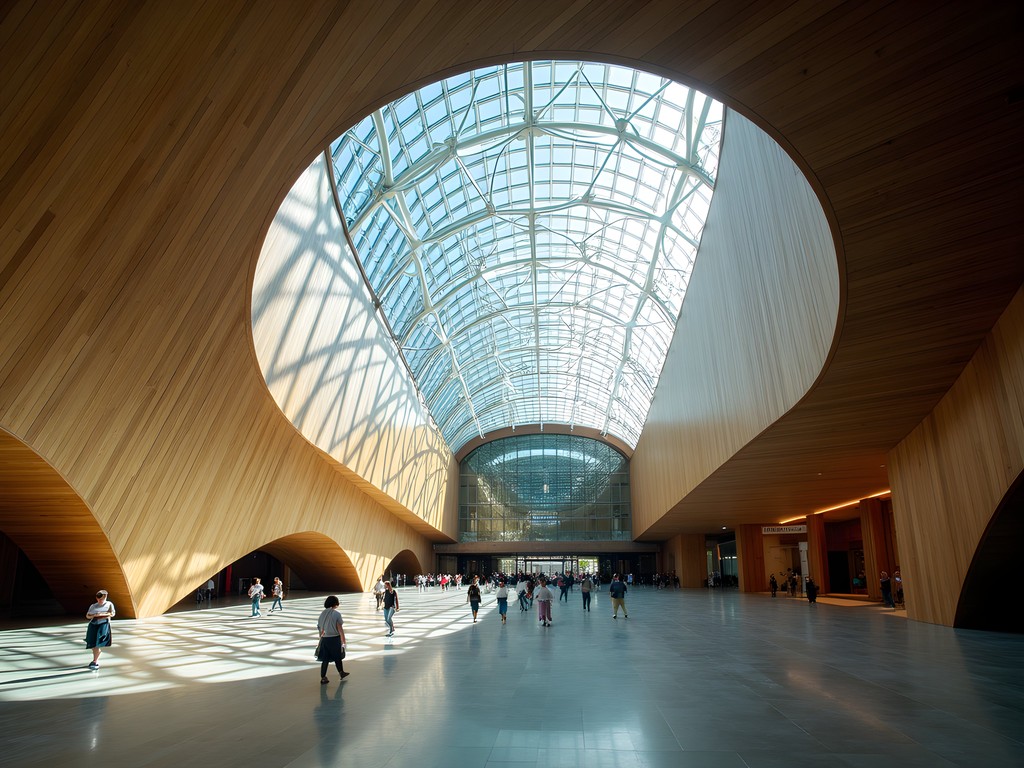
💡 Pro Tips
- Visit the Tokyo Metropolitan Government Building observation decks for free panoramic views of the city's architectural landscape
- Explore Daikanyama T-Site (Tsutaya Books) for one of Tokyo's most photogenic contemporary buildings
- Consider a guided architectural walking tour of Omotesando to understand the progression of Japanese design philosophy
Architectural Contrasts: Design Philosophies Across Cultures
What fascinates me most about comparing Barcelona and Tokyo's architectural identities is how they reflect fundamentally different cultural approaches to space, nature, and the urban experience.
Gaudí's Barcelona embraces organic chaos—buildings that seem to grow from the earth with undulating facades, melting balconies, and nature-inspired elements. His work rejects the industrial revolution's rigid forms in favor of structures that mimic natural processes. Walking through these spaces feels like entering a dream state where conventional rules of geometry no longer apply.
Tokyo, conversely, often emphasizes precision, functionality, and technological innovation. Even in its most creative expressions, Japanese architecture frequently adheres to principles of mathematical harmony and spatial efficiency. Yet both approaches share a reverence for craftsmanship and material integrity.
The contrast extends to each city's relationship with history. Barcelona preserves and celebrates its architectural heritage, with Gaudí's works forming the centerpiece of its identity. Tokyo, having faced numerous rebuildings after earthquakes and war, embraces architectural impermanence—buildings are regularly demolished and replaced with newer visions, creating a constantly evolving skyline.
For couples interested in exploring these contrasts more deeply, I recommend carrying a quality architecture guidebook that covers both traditional and contemporary perspectives. The contextual information enhances appreciation of both cities' design philosophies beyond mere visual appreciation.
One of my favorite experiences is taking clients to viewpoints that showcase each city's architectural ethos in panorama—Barcelona's Bunkers del Carmel for Gaudí's works punctuating the urban grid, and Tokyo's Mori Tower Sky Deck for its seemingly endless geometric skyline stretching to Mount Fuji.
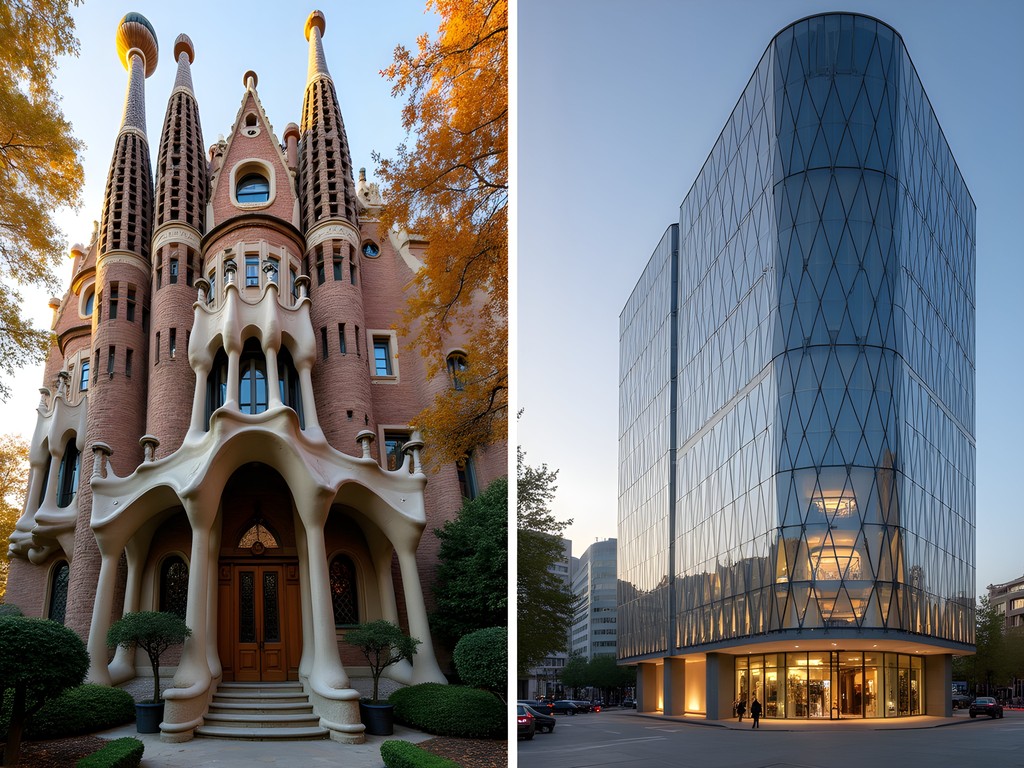
💡 Pro Tips
- Visit both cities' architecture museums for deeper context: Barcelona's Museu del Disseny and Tokyo's Architectural Institute of Japan
- Schedule contrasting experiences on consecutive days to better appreciate the different design philosophies
- Consider a private architecture tour in each city for expert insights beyond guidebook information
Luxury Accommodations: Where to Stay for Design Enthusiasts
For architectural enthusiasts, where you stay is as important as what you see. In both cities, I've curated accommodations that extend the design experience beyond sightseeing hours.
In Barcelona, the El Palace Hotel offers a perfect blend of historical grandeur and modern luxury. Its neoclassical architecture provides a fascinating counterpoint to Gaudí's revolutionary designs. For those seeking more contemporary design, Almanac Barcelona in the Eixample district features sleek interiors with floor-to-ceiling windows framing architectural views. My personal favorite remains Hotel Arts Barcelona, where the Frank Gehry fish sculpture outside creates a dialogue between the building and the Mediterranean.
For clients with unlimited budgets, I recommend booking the Gaudí Suite at the Mandarin Oriental Barcelona. Located on Passeig de Gràcia, its balconies offer direct views of Casa Batlló, allowing you to study Gaudí's masterpiece in changing light throughout the day.
In Tokyo, the Hoshinoya Tokyo reinterprets traditional ryokan aesthetics for the 21st century. Its latticed exterior and minimalist interiors offer a serene counterpoint to Tokyo's frenetic energy. For unparalleled views, The Ritz-Carlton Tokyo occupies the upper floors of the Midtown Tower, offering panoramas across the city's architectural landscape.
My insider recommendation is the Tokyo design hotel in Meguro. Each room is created by a different designer, offering a museum-like experience of contemporary Japanese interior design. The rooftop terrace provides intimate views of Tokyo's residential architecture—a perspective most visitors miss.
In both cities, I advise clients to request rooms with architectural views whenever possible—the premium is well worth the immersive experience of watching these urban landscapes transform from dawn to dusk.
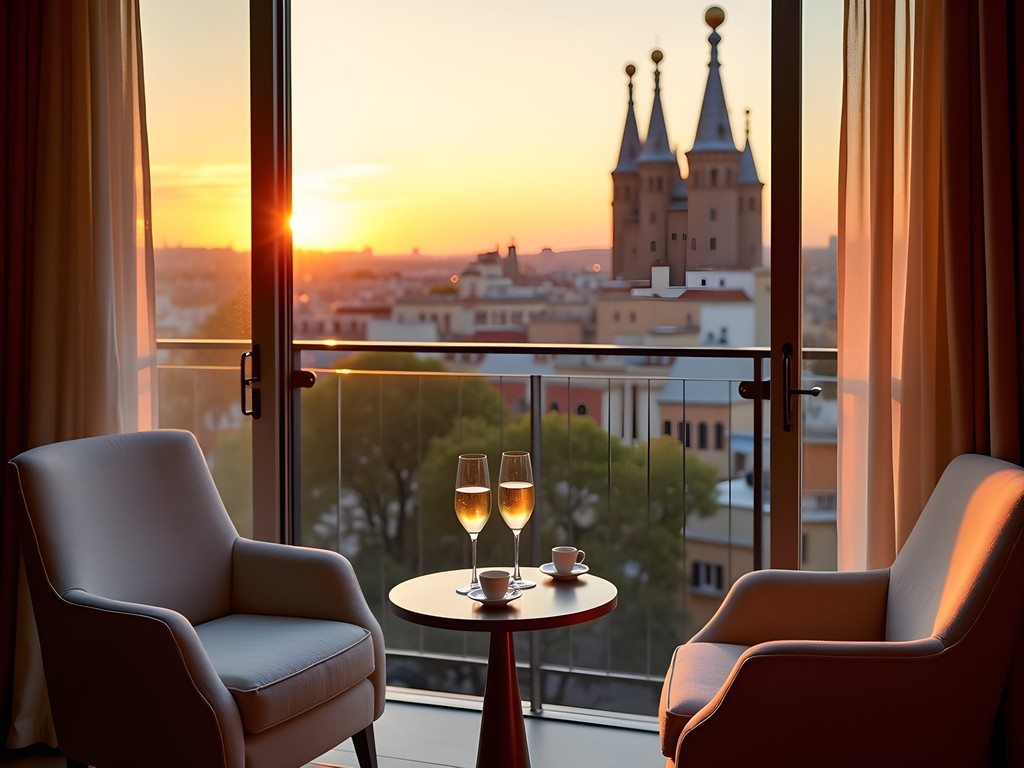
💡 Pro Tips
- Request high-floor, corner rooms for the best architectural views in both cities
- Consider splitting your stay between different hotel styles to experience varied design aesthetics
- Book hotels within walking distance of major architectural sites to maximize exploration time
Seasonal Considerations: Experiencing Architecture in Autumn
Having visited both Barcelona and Tokyo multiple times throughout the year, I can confidently say that autumn offers the most rewarding conditions for architectural appreciation in both cities.
Barcelona in October and November enjoys temperatures that hover comfortably between 15-20°C (59-68°F), perfect for extended walking tours without summer's oppressive heat. The lower sun angle creates dramatic shadows that accentuate Gaudí's textured facades and sculptural elements. Park Güell is particularly magnificent as the surrounding vegetation takes on golden hues that complement the colorful mosaics.
The autumn light in Barcelona has a golden quality that photographers call the 'magic hour,' but it extends longer during this season. I've spent entire afternoons watching how the changing light transforms the exterior of Sagrada Família from warm gold to deep amber as the sun sets.
Tokyo's autumn, particularly late October through November, brings comfortable temperatures and spectacular momiji (autumn leaves) that create natural frames for architectural photography. The Japanese have a word, 'koyo,' specifically for autumn leaf viewing, and many Tokyo gardens incorporate architectural elements that are designed to be viewed against this seasonal backdrop.
For serious photographers, I recommend packing a travel tripod for low-light architectural shots, particularly useful for evening photography of illuminated structures like Tokyo Tower or Barcelona's Magic Fountain of Montjuïc. The compact design makes it practical even for luxury travelers who prefer to travel light.
Both cities host architecture-focused events during autumn months. Barcelona celebrates Gaudí with special access events during Architecture Week in October, while Tokyo's Design Week in late October/early November features installations throughout the city that create dialogue between traditional and contemporary Japanese design philosophies.
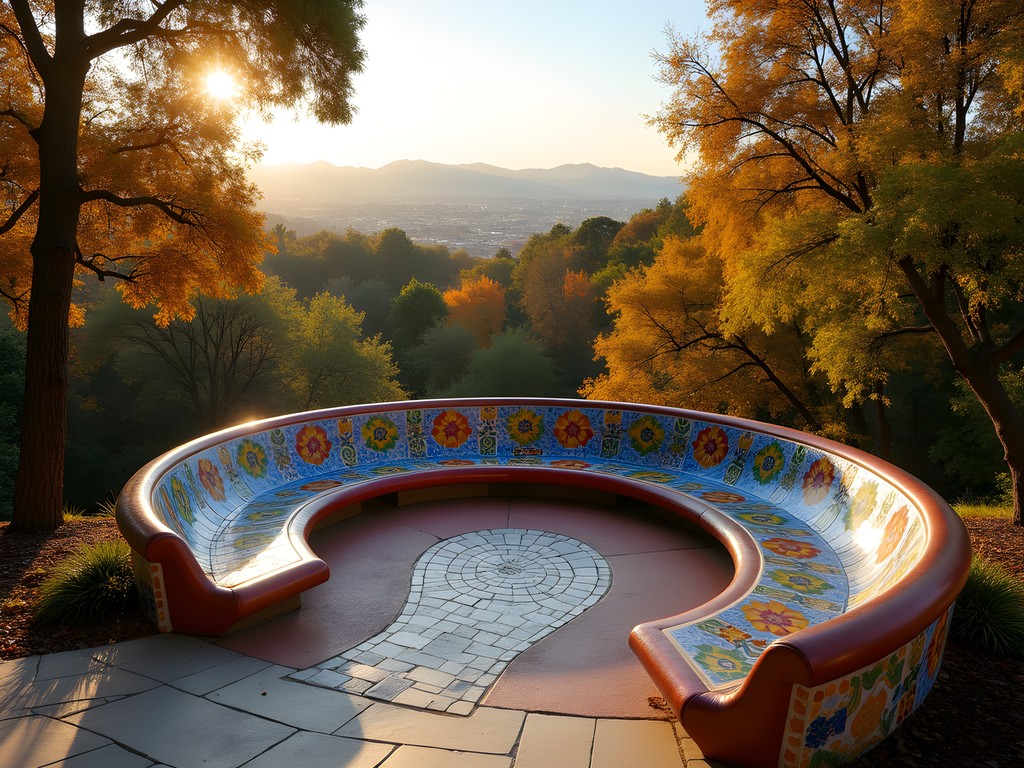
💡 Pro Tips
- Schedule outdoor architectural viewing between 10am-4pm in Barcelona for optimal lighting conditions
- Visit Tokyo's Rikugien Garden to see traditional Japanese architecture framed by autumn foliage
- Pack layers for both destinations as temperatures can fluctuate significantly between morning and evening
Final Thoughts
As our architectural journey through Barcelona and Tokyo concludes, I'm reminded that great design transcends cultural boundaries while simultaneously expressing profound cultural truths. Gaudí's organic masterpieces and Tokyo's geometric innovations represent different answers to the same fundamental questions about how humans should inhabit space. The joy of experiencing both within a single journey lies in recognizing these conversations across time and geography. Whether you're captivated by Barcelona's whimsical modernisme or Tokyo's sleek futurism, both cities offer an education in how architecture shapes our experience of the world. I encourage you to approach this two-week adventure with open eyes and curious minds—sketch buildings that move you, engage with locals about their architectural heritage, and allow yourselves the luxury of unhurried contemplation. The most meaningful souvenirs from this journey will be the new perspectives you bring home. When will you begin your architectural pilgrimage?
✨ Key Takeaways
- Barcelona and Tokyo represent contrasting architectural philosophies that reflect their cultural values and historical contexts
- Autumn offers ideal conditions for architectural appreciation in both cities with favorable lighting and comfortable temperatures
- Staying in design-focused accommodations enhances the immersive architectural experience beyond daytime sightseeing
📋 Practical Information
Best Time to Visit
October-November
Budget Estimate
$10,000-15,000 for two people for two weeks (luxury accommodations)
Recommended Duration
14 days (7 in each city)
Difficulty Level
Intermediate

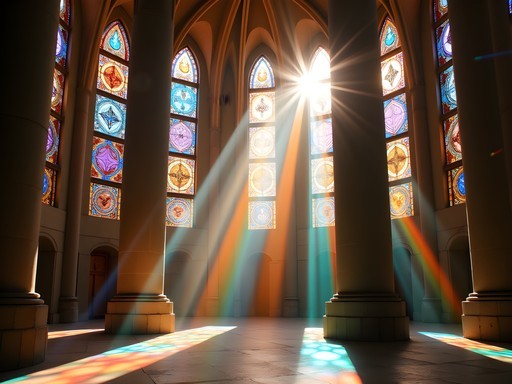






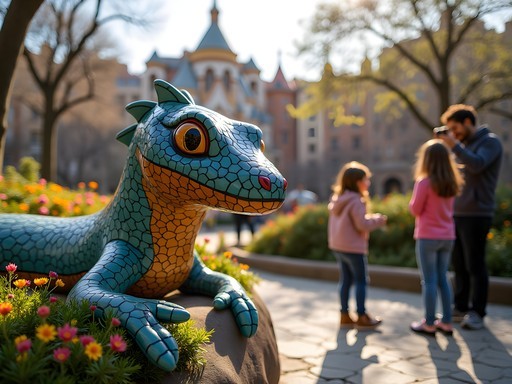

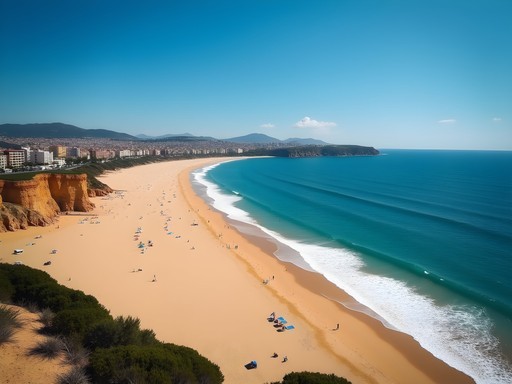
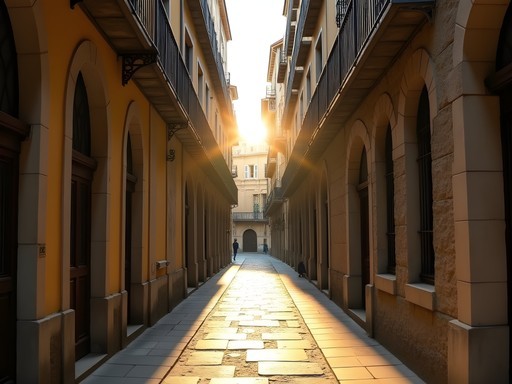
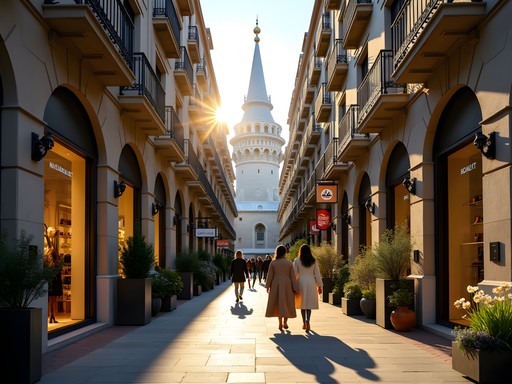
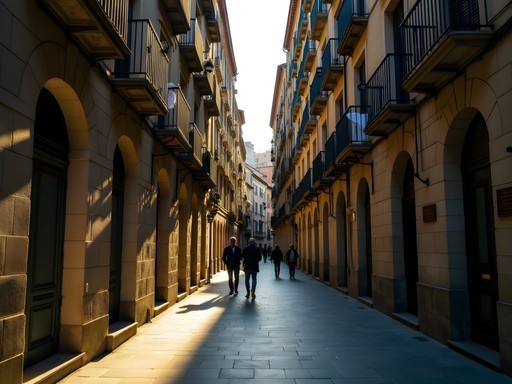
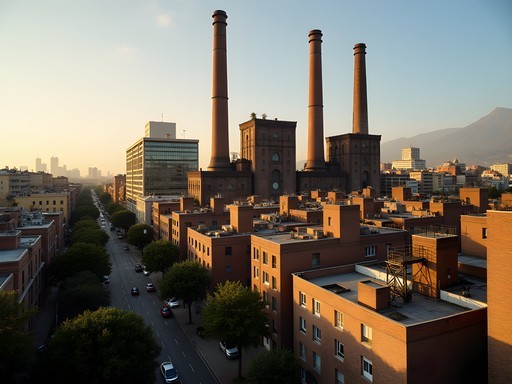
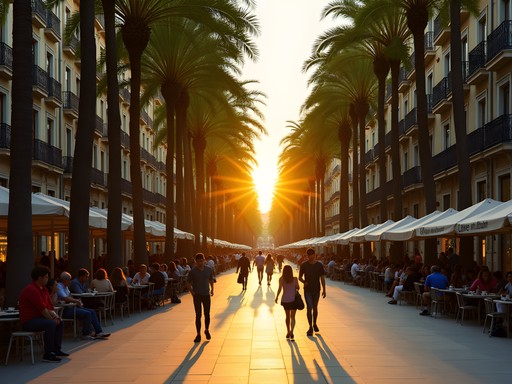
Comments
coffeezone
Great post! We're trying to decide between Barcelona and Tokyo for our anniversary trip next year. Which would you recommend for a couple who loves architecture but also wants good food and relaxing vibes?
exploreadventurer
Barcelona 100%! The food scene is incredible (tapas crawl!), beaches right in the city for relaxing, and the architecture is all within easy walking/metro distance. Tokyo is amazing but can be overwhelming and less relaxing for an anniversary vibe.
Hunter Thompson
Brilliant post, Timothy! Having backpacked through both cities last year, I totally agree about the philosophical contrasts. Barcelona celebrates imperfection and organic forms while Tokyo embraces precision and technological innovation. One thing I'd add is how accessible these architectural wonders are by public transport in both cities. Tokyo's metro system is famously efficient, but Barcelona's metro also connects most Gaudí sites perfectly. My mind was completely blown by Nakagin Capsule Tower in Tokyo - it's sadly being demolished now but represents such a fascinating architectural experiment. Did anyone else catch the temporary digital art installation they did at Casa Batlló last summer? They projected animations onto the facade at night and it was INSANE!
greenqueen
I missed that installation! 😭 Now I need to go back!
wildlegend
Going to Barcelona in November - is it worth getting tickets to all the Gaudí sites or should I just pick a couple?
oceanlover
Definitely get tickets for Sagrada Familia (book in advance!) and Park Güell. The others are cool from outside too if you're short on time/money.
happyperson
Beautiful photos! The Casa Batlló facade looks unreal!
wildlegend
Right?? And it looks even better in person. Those dragon-scale tiles on the roof shimmer in the sunlight!
oceanlover
Great comparison between these two cities! I've been to both and found it fascinating how Barcelona's architecture feels so organic and nature-inspired while Tokyo embraces such clean futuristic lines. We spent three days just wandering Park Güell and the Gothic Quarter in Barcelona, then did the same in Harajuku and Omotesando in Tokyo. The contrast couldn't be more striking! One tip: I used my pocket guidebook which had some excellent walking tours connecting Gaudí's buildings in the most efficient route.
greenqueen
OMG I visited Sagrada Familia last summer and it literally brought me to tears!! The way the light comes through those stained glass windows is something you can't capture in photos. Has anyone been to both Barcelona and Tokyo? I'm planning my first Asia trip and wondering if Tokyo's architecture will give me the same emotional reaction as Gaudí's work did!
Hunter Thompson
They're completely different vibes but equally mind-blowing! Barcelona feels like walking through an artist's dream while Tokyo is like stepping into the future. Make sure you check out Tokyo Skytree at sunset - the contrast of traditional temples against the ultramodern skyline will definitely hit you in the feels!
greenqueen
Thanks Hunter! Adding Tokyo Skytree to my list right now. Any hotel recommendations that have great architectural features?
Hunter Thompson
Even on a backpacker budget, I splurged one night at the Hoshinoya Tokyo - it's a modern take on a traditional ryokan. Not cheap but worth it for the experience! For budget options, Book and Bed Tokyo is literally built into a bookshelf and has amazing design vibes.
Douglas Bradley
Excellent comparative analysis, Timothy. What fascinates me most is how both cities reflect different approaches to the human-nature relationship in urban environments. Gaudí integrated natural forms directly into his structures, while Tokyo's architects often create deliberate juxtapositions between built and natural elements. I'd add that Barcelona's architectural narrative feels more cohesive due to Gaudí's singular vision, while Tokyo's architectural identity emerges from multiple competing philosophies. This creates a different kind of exploration experience - Barcelona invites deep immersion in one man's vision, while Tokyo rewards those who appreciate stylistic contrasts.
winterrider9912
Your photos of Sagrada Família are insane! What camera did you use?
exploreadventurer
The comparison between organic and geometric design philosophies was fascinating. I've been to Tokyo but missed some of the architectural gems mentioned here. Adding Kengo Kuma's buildings to my list for next time! Anyone have thoughts on whether Barcelona or Tokyo is more walkable for architecture enthusiasts?
Jean Wells
Barcelona is definitively more walkable for architecture viewing. Tokyo's architectural highlights are spread across a much larger urban area requiring efficient use of the metro system. However, Tokyo compensates with its excellent public transportation.
moonguy
I've been to Tokyo twice but completely missed some of these architectural gems! Too focused on the food scene I guess. Adding these buildings to my list for next time. Anyone know if that Prada building in Omotesando is still worth visiting? Heard it was getting a bit dated.
explorephotographer
The Prada building is still amazing! Great for night photography too with all the lit panels.
Venture X
Premium card with 2X miles, $300 travel credit, Priority Pass